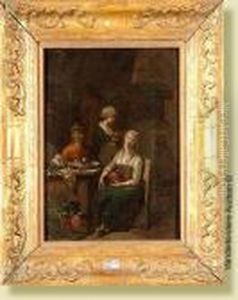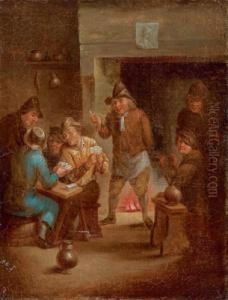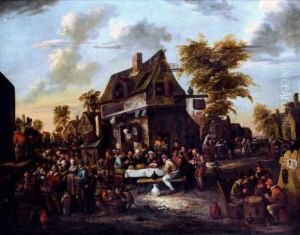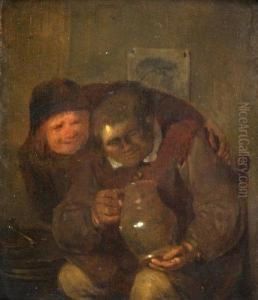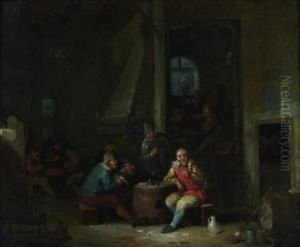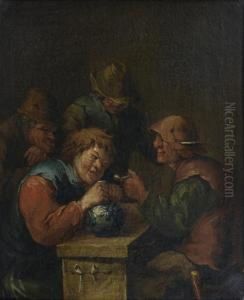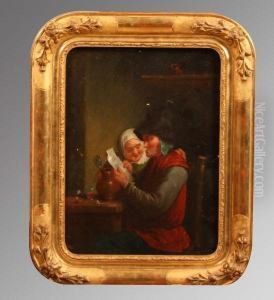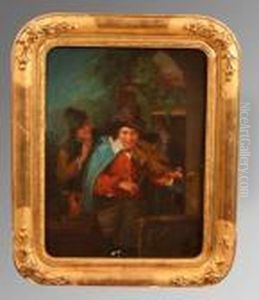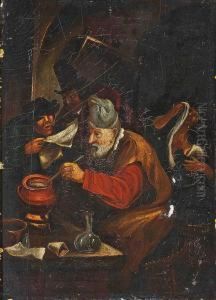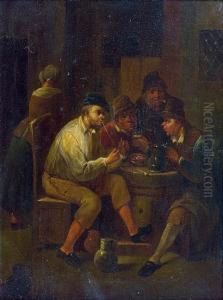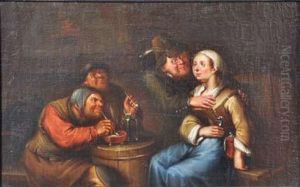Egbert Van Heemskerk Le Vieux Paintings
Egbert van Heemskerk the Elder, also known as Egbert van Heemskerk I, was a Dutch Golden Age painter born around 1634 in Haarlem, Netherlands. His works primarily depict scenes filled with humor and satire, focusing on the follies and vices of his contemporaries. Heemskerk's early life is somewhat obscure, but it is believed that he was a pupil of the Haarlem painters Jan Miense Molenaer and Adriaen van Ostade, who were well-known for their genre paintings, which likely influenced his stylistic development.
Heemskerk's art often features lively tavern scenes, quack doctors, and other aspects of 17th-century Dutch society, rendered with a keen eye for detail and a penchant for caricature. His work is characterized by dynamic compositions and a rich use of color, which helped convey the narrative and emotional content of his scenes. Despite the humorous nature of his paintings, they also offer insightful commentary on the human condition and social critique, reflecting the complexities of life in the Dutch Golden Age.
In the latter part of his career, around 1672, Heemskerk moved to London, England, where he continued to work and gained a reputation among the English elite. His move to London marked a significant period as he adapted his style to cater to English tastes, which included portraits and religious subjects alongside his genre scenes. However, it was his Dutch genre paintings that remained most popular and influential, contributing to his legacy in the art world.
Egbert van Heemskerk the Elder passed away in London in 1704. His works remain in collections worldwide, showcasing his unique ability to blend humor with keen social observation. His son, Egbert van Heemskerk the Younger, also became a painter, continuing the family tradition. Despite the passage of time, Heemskerk the Elder's paintings continue to be celebrated for their vivid storytelling and depiction of 17th-century life.
